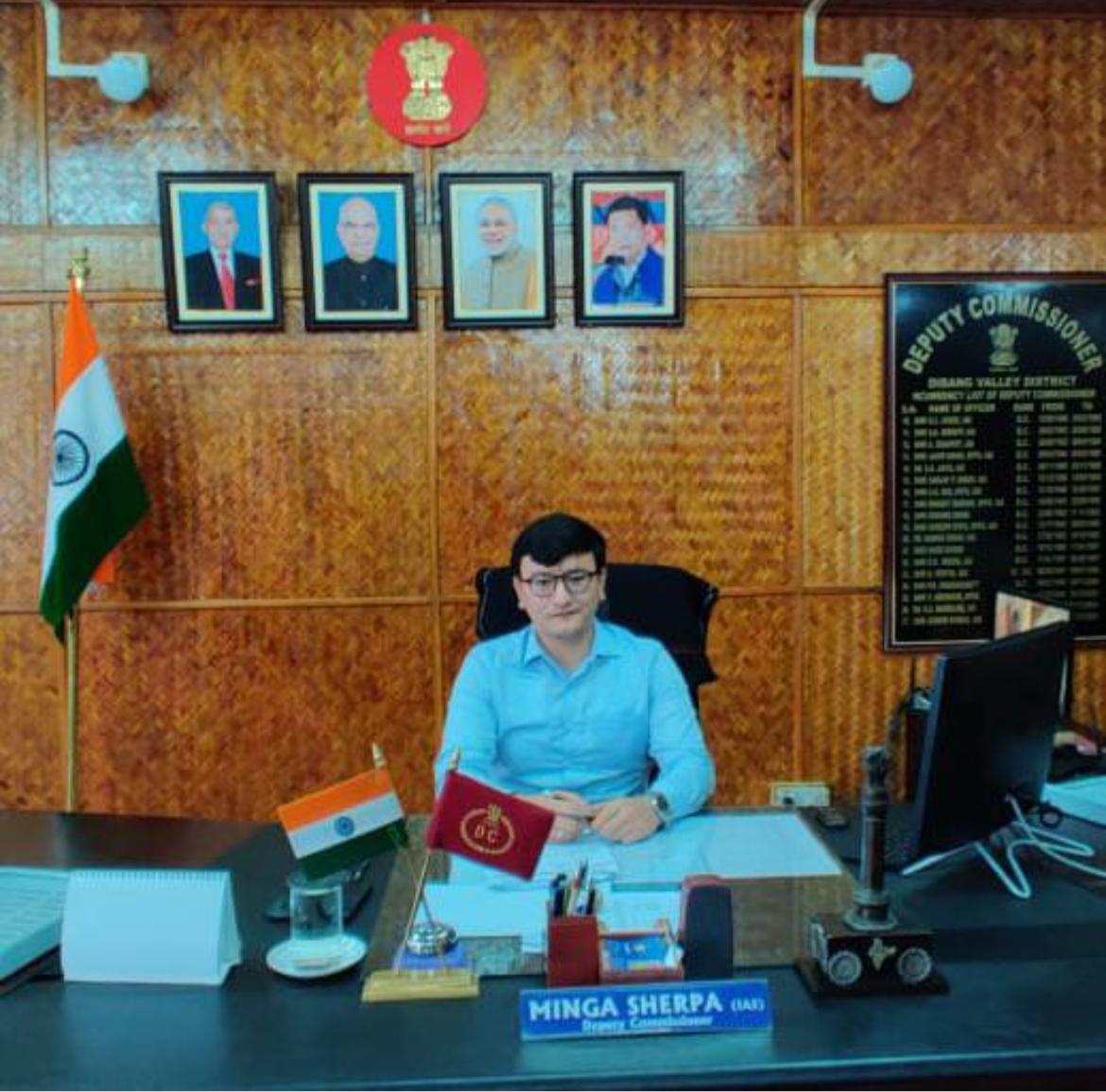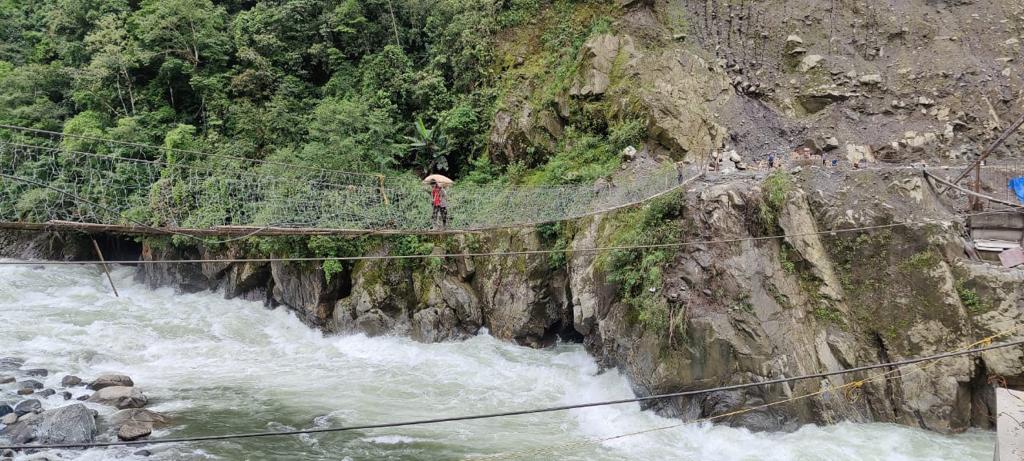IAS Officer Ensures Covid Aid Even After the Only Bridge to an Arunachal Village Snaps
When the only bridge connecting Dibang Valley to the rest of India snapped in the middle of the pandemic, IAS officer Minga Sherpa knew it could prove disastrous for COVID-affected families in the district. What he did next is truly inspiring governance.

Anini – the headquarter of the Dibang valley in Arunachal Pradesh is referred to as the ‘Last Town of India’. With 8,000 residents, it also holds the distinction of being the least populated district in India.
On 6 April 2021, Bailey bridge, which connects the district headquarters with the rest of the State, collapsed because of an overloaded truck that was passing through. What followed was nothing short of a nightmare for the people of the district.
This was around the time when the country was grappling with the second wave of COVID-19 and the breaking down of the only bridge that connected the people of the district to the mainland posed a huge challenge. At the time of the bridge collapsing, the district had close to 100 active COVID-19 cases, of which some needed emergency medical aid and oxygen as well.
Unfortunately, even the nearest oxygen refill point was two days away and with the bridge breaking down, the time it took only increased.
However, District Commissioner (DC) Minga Sherpa and his entire team jumped in to find solutions to the problem at hand.

“Bailey bridge by itself is almost 10 years old and was a temporary bridge, to begin with. The collapse of this bridge brought vehicular movements to a complete halt. This, unfortunately, was the second time it has collapsed. Being a remote district, getting men and material to re-build the bridge takes a very long time,” says DC Sherpa speaking to The Better India.
Two months later, the materials and manpower to rebuild the bridge have now arrived at the site. “For the last two months, we had no reliable way to get to the district headquarters. There was one kaccha road but maintaining it in the rains is extremely difficult,” he adds.
For close to three weeks there was no road connectivity to the district and a traditional rope bridge was built, using bamboo, to ferry the medical equipment, medicines and vaccines to the district.

Speaking about the history of the district, DC Sherpa says, “Until 20 years ago, the only way to get supplies to the district was via helicopters. No road connected the district to the rest of the world.” He also mentions that for a population of about 8,000 people, there are only two mobile towers in the district, which also work sporadically.
Life comes to a grinding halt

“In times like these when the entire country is dealing with a pandemic, not having good mobile connectivity and with the only source of physical connection to the State being cut off, it was a difficult phase,” he says. The administration deployed as many people as they could to physically ferry the equipment to the other side. In times like these, what has helped is relying on the traditional methods of communication.
DC Sherpa says, “We resorted to using trucks owned by shopkeepers to make visits to each colony. They take grocery orders from the people and have them delivered as well. To keep this system going, we are bearing the costs of fuel and also giving these vehicles the permits they need to travel during the lockdown.”
When the vaccines arrived, they needed to be dispatched from the cold chain point and reach the other cold chain point within the same day.

If that did not happen, there was a risk of the entire set of vaccines becoming unusable due to spoilage. “These circumstances have sometimes meant that we use four vehicles to transport the vaccines. Sometimes the vehicle goes from point A to B and then the staff have had to physically carry it up to another point from where it is loaded into a vehicle again,” he says.
Currently, things are under control with a temporary Bailey bridge being built by the National Highways and Infrastructure Development Corporation (NHIDC). However, DC Sherpa says that since the bridge is at the river bank at a flood level a single day of heavy rains submerges the bridge and renders it unfit for sure. “Given the lockdown, the team that was supposed to help build the bridge was held up. Now with things opening up, the team has arrived and we do feel that there will be some respite for us,” he concludes.
(Edited by Yoshita Rao)
If you found our stories insightful, informative, or even just enjoyable, we invite you to consider making a voluntary payment to support the work we do at The Better India. Your contribution helps us continue producing quality content that educates, inspires, and drives positive change.
Choose one of the payment options below for your contribution-
By paying for the stories you value, you directly contribute to sustaining our efforts focused on making a difference in the world. Together, let’s ensure that impactful stories continue to be told and shared, enriching lives and communities alike.
Thank you for your support. Here are some frequently asked questions you might find helpful to know why you are contributing?


This story made me
-
97
-
121
-
89
-
167











